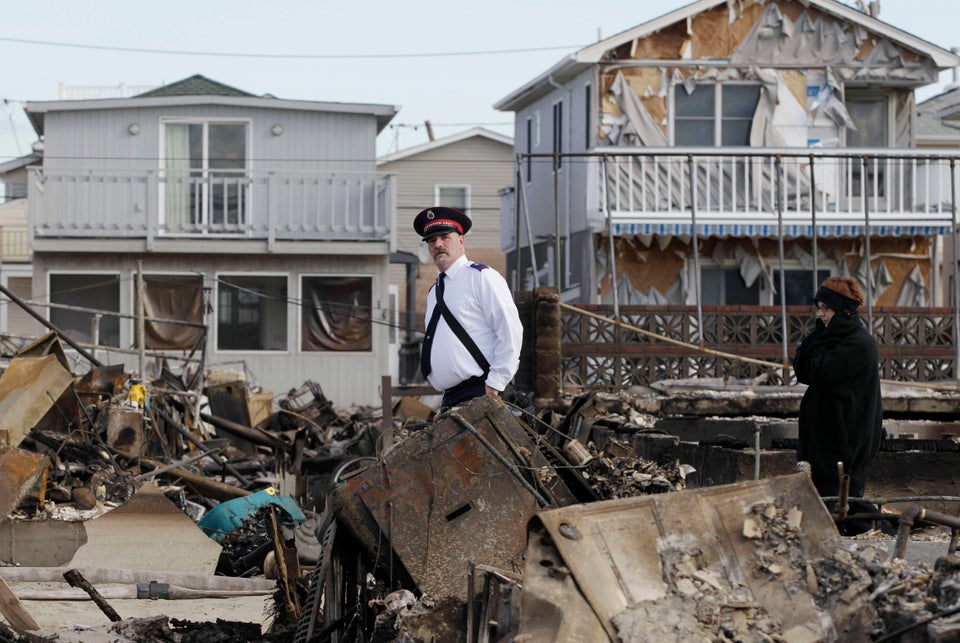It’s been two years since Superstorm Sandy, and much of New York City is still vulnerable to flooding from storm surges. And as global sea levels continue to rise, that flooding risk will only increase. While Sandy caused around $19 billion in damages and economic losses in New York City, the same storm would cost the city $90 billion in 2050, according to a recent analysis by the city government. According to city risk assessments, 400,000 people already live in an area that has a 1 percent chance of flooding in any given year.
There are a number of proposed solutions for this ever-worsening problem, ranging from the practical to the whimsical. The Huffington Post took a look at some of the proposed solutions (including some conceived even before Sandy brought attention to the issue), as well as the official recommendations of the New York City Special Initiative for Rebuilding and Resiliency, a Bloomberg administration effort to build a more resilient city post-Sandy. While some of these ideas may seem far-fetched, these are all real proposals.
Idea #1: Seal Off New York Harbor Completely
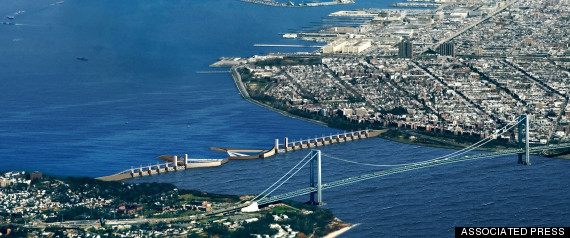
These engineering proposals actually predate Sandy, but the city has never formally considered acting on them. In 2009, four engineering firms proposed designs to construct four barriers that, in different combinations, would attempt to close off the harbor in case of a storm surge. These barriers could be opened to allow water and ships through when seas were calm, but could close when a storm threatened the city.
Other countries have taken this route, most notably the Netherlands. The Dutch began construction of their huge system of protective dams and moveable storm-surge barriers, called Delta Works, in the 1950s, and it took more than 50 years to complete. A barrier also spans London’s Thames River; it was built in the early 1980s. Venice is currently constructing barriers to protect the city from ever-rising seas, despite political turmoil surrounding the project.
There are some problems with ideas like this. For one, the cost of such a large infrastructure project would be enormous, with estimates ranging from $9 billion to $29 billion, if the cost of fortifying areas around the barriers are included. Despite protecting a large part of the city, barriers would also leave many areas unprotected, like the Rockaways, which were devastated during Sandy. There are ecological issues that must be closely examined, since the barrier could reduce water circulation in the harbor and affect marine life.
Critics of this potential solution also note that any plan that relies on one solution, as the barrier plan does, would leaves the entire city vulnerable if the barrier failed or the waters peaked higher than current worst-case scenario projections.
The barriers could also create new problems. Klaus Jacob, a geophysicist at Columbia University’s Lamont-Doherty Earth Observatory who studies climate change adaptation and disaster risk management, told The Huffington Post that constructing large barriers in the harbor is an “ill-fated” idea, especially because of the Hudson and Passaic rivers. If sea levels rose to the point where the barriers had to be closed off permanently to protect the city, they could create their own problems should the rivers flood, trapping in water that surges in from behind.
Idea #2: Add Seaport City, A 'Multi-Purpose' Levee, To The East Side Of Manhattan
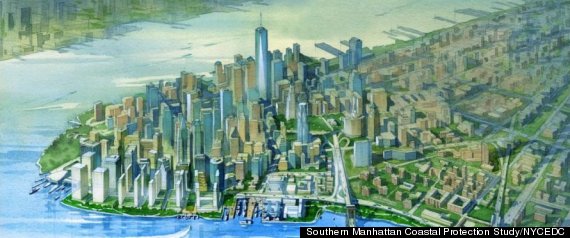
This idea is included in New York’s much larger climate resiliency plan, but because of the large-scale engineering that would be needed to execute it, it has received the bulk of the attention. Think of it as a Battery Park City for the East Side. Engineers would fill in part of the river to create a new, thin strip of a neighborhood on the east side of Manhattan that would act as a levee, sloping upward toward the waterfront. The city recently commissioned a study that found that such a levee was technically and financially feasible, and that leasing the new land could fund future flood protection projects in Lower Manhattan.
The downside? This is also an expensive project that would only help one area of Manhattan, though other proposals in the overall plan target all vulnerable areas with a wide range of solutions. It would also require a significant amount of construction to fill in portions of the East River and could take a long time to complete.
Idea #3: Protect Lower Manhattan With 'The BIG U'
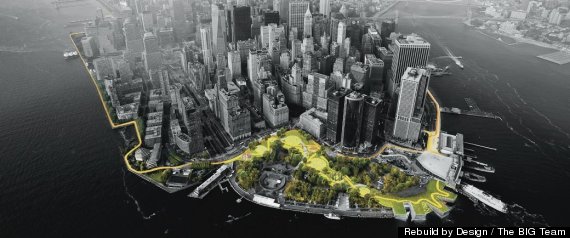
The “BIG U” started as a proposal in the Rebuild By Design competition, which asked scientists and urban designers to come up with ideas for rebuilding Sandy-affected areas. This proposal, from the Bjarke Ingels Group of Denmark, would surround all of lower Manhattan with a series of berms, folding panels and green space. Not only would this plan protect Manhattan from flood waters, it would create new parks, esplanades and public spaces reminiscent of New York’s elevated greenway, the High Line. This idea has already received $335 million in federal funding to begin construction of the first phase along Manhattan’s vulnerable Lower East Side, which puts it a step ahead of many others on this list.
Since the project is designed to be constructed in phases, it will provide protection to the Lower East Side even before the entire U is done.
Though the overall price tag is lower than some other projects, it would still only protect Manhattan, not other boroughs or surrounding areas. And Jacob cautions that a project like this might make New Yorkers too complacent. “I fear that when the BIG U will be completed,” he said, “people in downtown Manhattan will feel falsely safe behind it forever, which is not the case.”
Idea #4: Moving Up and Sealing Out
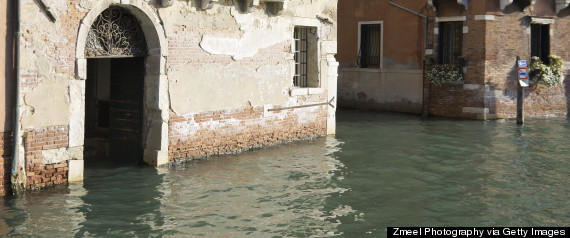
The New York City Department of City Planning issued a new report on Oct. 8 looking at options for retrofitting buildings to prepare for flooding. These new guidelines aim to make existing buildings more resilient to storms. Suggestions include elevating smaller buildings, abandoning lower floors in large buildings, and moving a building’s utilities and plumbing systems above the flood line.
Lower floors could be retrofitted and used for parking or other non-essentials, which would allow water to flow through without damaging the structure or critical systems. Other non-residential buildings could also be retrofitted to seal out water completely. Owners could also “dry floodproof” the lower floors of buildings, preparing them to seal out water during a short-duration flood.
Some apartment buildings may need to clear out ground floor apartments and convert them into other non-essential uses. This is a common approach employed in other flood-prone areas such as Venice, where very few people live on the ground floor.
The downside? There can always be some damage when buildings flood, even if essentials are kept safe, and this strategy is unlikely to be practical in the long run, as sea levels rise. But retrofitting buildings is good insurance against floods that could come before other protective infrastructure is put in place.
Idea #5: Use Soft Infrastructure To Absorb Water
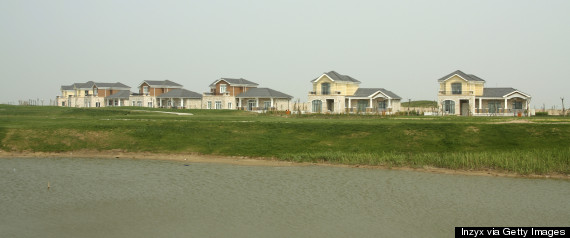
Seawalls, levees and other hard infrastructure aren’t the only ways to protect coastal areas. Instead, a combination of shoreline ecosystem restoration, reef restoration and even restoring oyster beds could be what the city needs. One study by researchers at the Natural Capital Project and the Nature Conservancy suggested that preserving existing coastal habitats would cut the risks to people and property in half by 2100.
Coastal ecosystem health was included in Bloomberg’s plan to protect New York, and it is part of other cities’ plans as well. The Museum of Modern Art also asked teams of architects and landscape architects to come up with soft infrastructure options for the city as part of its Rising Currents project in 2009. Their proposals included green waterfronts and sponge-like pavement, and they extended to areas of the city beyond Manhattan.
The downside? Waterfront development has become common in the city, and convincing some developers to allow a buffer between them and the water might be difficult.
What Is The Best Strategy?
The best plans seem to rely not on a single strategy, but on many layers of protection. Dan Zarrilli, director of the Mayor’s Office of Recovery and Resiliency, told the magazine Emergency Management that the department has often run into problems with people believing a “silver bullet” exists to combat flooding. “But we’ve learned that the risks are way too varied,” he said. “We need to advance a broad range of strategies, which is exactly what we’re doing.”
Columbia’s Jacob told HuffPost that the city’s plan was good in that sense. “You need a mix that is very much tuned to the specific neighborhoods, coastal conditions and topographies, and approach it that way.”
George Deodatis, chair of the civil engineering and engineering mechanics department at Columbia, told HuffPost that timescales are also important. “Adaptation strategies will consist of multiple measures that could potentially be implemented at different time [frames],” he said. He added that “we should be planning [for] 2100 and beyond,” considering the effects of rising sea levels due to climate change.
The key to determining the effectiveness of a particular idea is to compare the costs of the project to the estimated benefits over time, Deodatis said. This is “the only way to compare the effectiveness of different adaptation strategies.” As far as he is aware, this kind of analysis has not been done.
At an event presenting the city’s longterm climate-change plan, former Mayor Michael Bloomberg said that “as New Yorkers, we cannot and will not abandon our waterfront. It's one of our greatest assets. We must protect it, not retreat from it.” But others see strategic retreat from rising sea levels as the only viable longterm option. Jacob told HuffPost that strategic retreat in certain areas, like the Rockaways and portions of Staten Island, are “steps in the right direction.”
“We are still in risk denial [when it comes to] sea-level rise and all its longterm consequences,” Jacob said. “So the kind of resilience proposals that are now on the table are good for roughly the mid-century, give or take. … They essentially postpone all the real true solutions to generations post-2100.”
